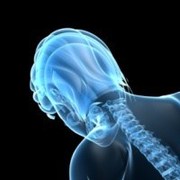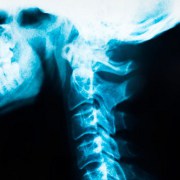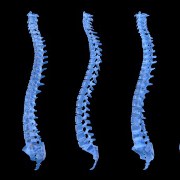 Photo: Getty Images
Photo: Getty Images
A common spinal cord disorder in people ages 55 and over, cervical spondylotic myelopathy results in pressure on the spine due to changes in the ligaments, discs and bones. Emory Healthcare noted that the common area in the spinal cord affected by cervical spondylotic myelopathy is the C4 to C7 area.
Patients with this disorder experience pain, weakness, numbness and coordination problems. The symptoms of cervical spondylotic myelopathy tend to progress slowly, though 5 to 20 percent of patients have symptoms that progress more rapidly, according to the American Academy of Orthopaedic Surgeons.
Treatment options for cervical spondylotic myelopathy include surgical interventions and nonsurgical interventions. Patients should discuss with their physicians which treatment is right for them and what the possible side effects are.
Nonsurgical Treatment for Cervical Spondylotic Myelopathy
If a patient has a mild form of cervical spondylotic myelopathy, then the physician may recommend observation. Some patients may use neck braces and physical therapy. Neck braces work by limiting neck motion, allowing the neck to rest.
This intervention is short-term, as long-term wear may lead to reduced strength of the neck muscles. However, the American Academy of Family Physicians pointed out that it is not clear if these treatments can help with cervical spondylotic myelopathy.
While pain relievers, such as nonsteroidal anti-inflammatory medications, can help reduce pain, they do not help reduce other symptoms of cervical spondylotic myelopathy. Another pain reliever option is epidural steroid injection, which also reduce swelling, though the American Academy of Orthopaedic Surgeons noted that this treatment is not often used with cervical spondylotic myelopathy.
Other nonsurgical treatment options for cervical spondylotic myelopathy include exercise, which can increase neck strength.
Surgical Treatment for Cervical Spondylotic Myelopathy
Surgery for cervical spondylotic myelopathy helps alleviate the pressure on the spinal cord. The American Academy of Orthopaedic Surgeons stated that patients who are younger, have a shorter duration of symptoms, experience electrical sensation down the back and through the limbs, have a single area of involvement, and have a larger part of the spinal cord available experience a better outcome after surgery.
There are two approaches for surgery: the anterior approach and the posterior approach. Anterior approach options include anterior cervical discectomy and fusion, anterior cervical corpectomy and fusion, and bone graft. Posterior approach options include laminectomy and laminoplasty.
Each approach has its own advantages and disadvantages. For example, while the anterior approach reliefs neck pain and restores the patient’s spinal cord alignment, there are risks for motion loss and needing bracing. With the posterior approach, patients have less motion loss, but the spinal canal may not achieve total decompression and late instability may occur.
References
American Academy of Family Physicians. Cervical Spondylotic Myelopathy. Web. 23 December 2011
http://familydoctor.org/familydoctor/en/diseases-conditions/cervical-spondylotic-myelopathy.printerview.all.html
Emory Healthcare. Cervical Spondylotic Myelopathy. Web. 23 December 2011
http://www.emoryhealthcare.org/spine/medical-conditions/cervical-spondylotic-myelopathy.html
American Academy of Orthopaedic Surgeons. Cervical Spondylotic Myelopathy. Web. 23 December 2011
http://orthoinfo.aaos.org/topic.cfm?topic=A00541
American Academy of Orthopaedic Surgeons. Cervical Spondylotic Myelopathy: Surgical Treatment Options. Web. 23 December 2011
http://orthoinfo.aaos.org/topic.cfm?topic=A00539
Reviewed December 23, 2011
by Michele Blacksberg RN
Edited by Jody Smith





Add a CommentComments
There are no comments yet. Be the first one and get the conversation started!